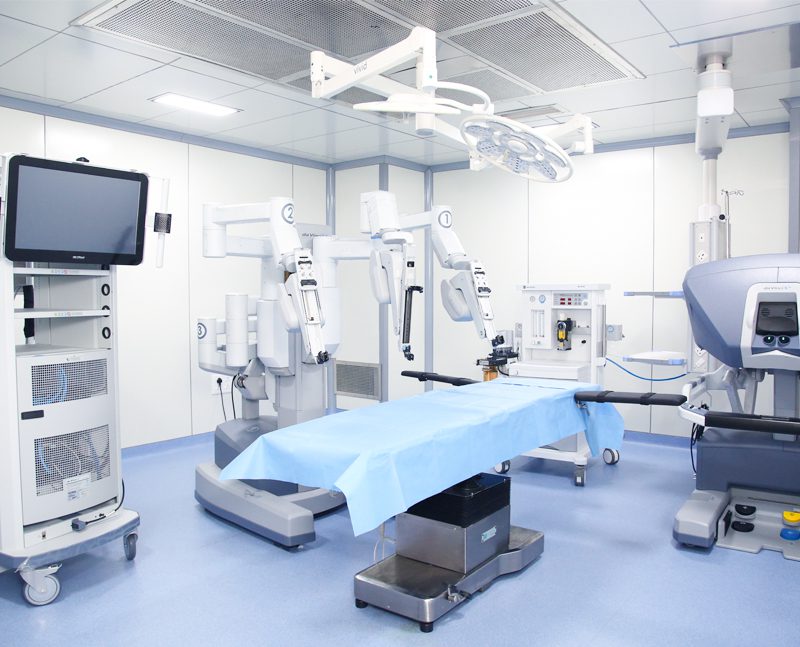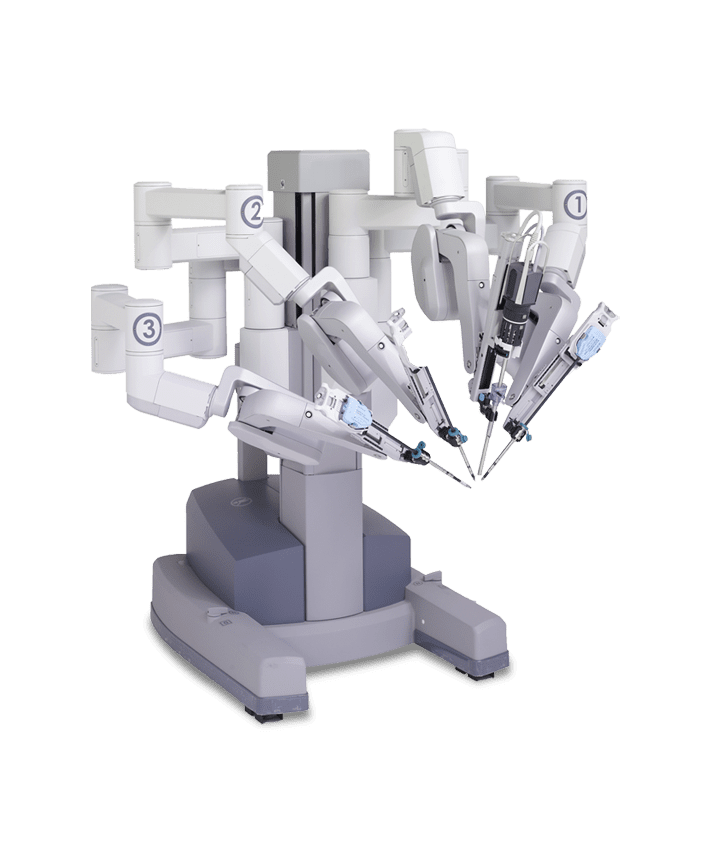
About Robotics Surgery

About Robotic Surgery
What is Robotic Surgery?
Robotic or Robot-Assisted Surgery integrates advanced computer technology with the experience of skilled surgeons. This technology provides the surgeon with a 10x magnified, high-definition, 3D-image of the body’s intricate anatomy.
The surgeon uses controls in the console to manipulate special surgical instruments that are smaller, as well as more flexible and manoeuvrable than the human hand. The robot replicates the surgeon’s hand movements while minimizing hand tremors. The surgeon can thus operate with enhanced precision, dexterity, and control even during the most complex procedures.
Why use da Vinci?
It enables surgeons to perform complex and delicate procedures through very small incisions, and has become an appropriate, less invasive option for complex hysterectomies and other gynecologic procedures.
How does da Vinci work?
Through tiny, 1-2 cm incisions, surgeons using the da Vinci system operate with great precision and control.
What types of gynecologic conditions can be treated using da Vinci?
Gynecologic conditions include cervical and uterine cancer, uterine fibroids, endometriosis, uterine prolapse, menorrhagia and excessive bleeding.
What types of prostate conditions can be treated using da Vinci?
Prostate conditions that can be treated include prostate cancer, ureteropelvic junction obstruction, bladder and kidney cancer, and vesicoureteral reflux.
What are the benefits of da Vinci?
The systems minimizes the pain and risk associated with large incisions. It also increases the likelihood of a fast recovery and has excellent clinical outcomes.









